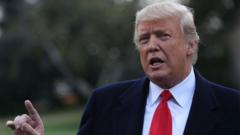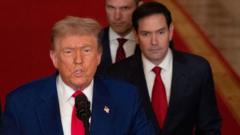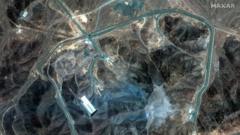**This ruling enables President Trump to advance controversial policies, including his executive order on birthright citizenship, setting the stage for significant legal battles ahead.**
**Supreme Court Ruling Enhances Presidential Authority for Trump and Beyond**

**Supreme Court Ruling Enhances Presidential Authority for Trump and Beyond**
**The recent Supreme Court decision limits the ability of lower courts to impede executive orders, marking a pivotal point for future administrations.**
The Supreme Court delivered a momentous ruling on Friday, significantly empowering President Donald Trump and future U.S. leaders by restricting lower courts' authority to block executive actions. Trump celebrated the decision, stating it bolsters the Constitution, the separation of powers, and the fundamental rule of law during a White House briefing.
The ruling permits Trump’s controversial executive order to revoke birthright citizenship, which grants automatic citizenship to individuals born on U.S. soil, to take effect in a month's time. Despite this power shift protecting Trump's immediate goals, actual implementation may face challenges, particularly as many states rely on processes that do not require documenting the citizenship status of parents on birth certificates. Justice Amy Coney Barrett, writing for the majority, acknowledged the potential for states to argue for a broader ban against the executive order, indicating forthcoming legal conflicts.
Trump characterized the court's ruling as a “giant win” and claimed it targets what he refers to as the “birthright citizenship hoax,” asserting its necessity to shield the immigration system from manipulation. Trump Attorney General Pam Bondi pointed out that the matter will undergo further examination in October, potentially sealing the fate of birthright citizenship.
The implications of this decision extend beyond citizenship issues. Historically, both Republican and Democratic presidents have lamented the power of ideological district judges to halt executive initiatives. Since Trump took office, the Congressional Research Service has identified 25 instances where lower courts have struck down his policies, ranging from foreign aid cuts to immigration enforcement. The current ruling serves to fortify the administration’s stance in seeking judicial approval for policies that have faced previous injunctions.
Similarly, past Democratic administrations have encountered challenges from conservative judges impeding their legislative moves, particularly in regulatory and immigration matters. This ruling may afford more leeway to presidents regardless of party affiliation, allowing them greater maneuverability in enacting their agendas while still remaining subject to constitutional oversight.
The Supreme Court emphasized the need for lower courts to expedite their review processes and ensure that injunctions align with equitable principles. However, as America awaits the impacts of this ruling, it sets a precedent that could alter the landscape of executive power for years to come.
The ruling permits Trump’s controversial executive order to revoke birthright citizenship, which grants automatic citizenship to individuals born on U.S. soil, to take effect in a month's time. Despite this power shift protecting Trump's immediate goals, actual implementation may face challenges, particularly as many states rely on processes that do not require documenting the citizenship status of parents on birth certificates. Justice Amy Coney Barrett, writing for the majority, acknowledged the potential for states to argue for a broader ban against the executive order, indicating forthcoming legal conflicts.
Trump characterized the court's ruling as a “giant win” and claimed it targets what he refers to as the “birthright citizenship hoax,” asserting its necessity to shield the immigration system from manipulation. Trump Attorney General Pam Bondi pointed out that the matter will undergo further examination in October, potentially sealing the fate of birthright citizenship.
The implications of this decision extend beyond citizenship issues. Historically, both Republican and Democratic presidents have lamented the power of ideological district judges to halt executive initiatives. Since Trump took office, the Congressional Research Service has identified 25 instances where lower courts have struck down his policies, ranging from foreign aid cuts to immigration enforcement. The current ruling serves to fortify the administration’s stance in seeking judicial approval for policies that have faced previous injunctions.
Similarly, past Democratic administrations have encountered challenges from conservative judges impeding their legislative moves, particularly in regulatory and immigration matters. This ruling may afford more leeway to presidents regardless of party affiliation, allowing them greater maneuverability in enacting their agendas while still remaining subject to constitutional oversight.
The Supreme Court emphasized the need for lower courts to expedite their review processes and ensure that injunctions align with equitable principles. However, as America awaits the impacts of this ruling, it sets a precedent that could alter the landscape of executive power for years to come.






















